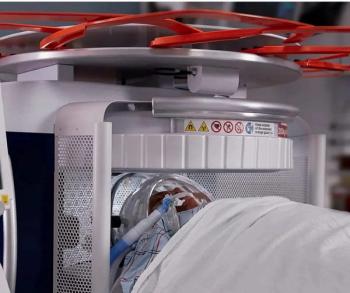
Digital Breast Tomosynthesis and Breast Density: What a New Study Reveals
In a large study of nearly 100,000 women, researchers found that the combination of digital breast tomosynthesis (DBT) and synthesized mammography had more than triple the detection rate for invasive breast cancer in extremely dense breasts in comparison to digital mammography alone.
Emerging research suggests the combination of digital breast tomosynthesis (DBT) and synthesized mammography (SM) is significantly more effective than digital mammography alone at detecting invasive breast cancer in women with dense breasts.
In a new sub-analysis from the multicenter, randomized TOmosynthesis plus SYnthesized MAmmography (TOSYMA) trial, researchers compared the invasive breast cancer detection rate (iCDR) of digital mammography and the iCDR of DBT and SM across women with different breast densities. The study authors reviewed data from 99,558 women with 49,762 women in the DBT and SM arm of the study and 49,796 women in the digital mammography group, according to the study, which was
Employing the Breast Imaging Reporting and Data System (BI-RADS), the study authors found that digital mammography had an iCDR of 3.6 per 1,000 screenings for women in BI-RADS category A (almost entirely fatty breast tissue) in comparison to an iCDR of 2.7 for the combination of DBT and SM.
However, for increasing levels of breast density, the researchers found the iCDR was significantly higher for the combination of DBT and SM. For women in BI-RADS category C (heterogeneously dense breasts), digital mammography had a 6.1 iCDR in comparison to an 8.3 iCDR for DBT and SM, according to the study. When assessing women with extremely dense breasts (BI-RADS category D), the study authors noted a more than threefold higher iCDR (8.1) for DBT and SM in comparison to digital mammography alone (2.3 iCDR).
“Although there is no consensus on the optimal approach, the TOSYMA trial results may suggest that especially women with extremely dense breasts could benefit from a transition from DM to DBT plus SM screening,” wrote Stefanie Weigel, M.D., who is affiliated with the Clinic for Radiology and Reference Center for Mammography at the University of Munster in Germany, and colleagues.
The study authors also noted the highest positive predictive value of recall among women in BI-RADS category C (17.3 percent for DBT and SM versus 12.7 percent for digital mammography alone). The lowest positive predictive value of recall occurred among women in BI-RADS category D (13.5 percent for DBT and SM in comparison to 8 percent for digital mammography), according to the study.
“These results are good news for women with extremely dense breast tissue,” noted Dr. Lee, an associate professor at New York University, and Dr. Moy, a professor of radiology at New York University. “This category of breast tissue is a risk factor for breast cancer and limits the detection of cancer with digital mammography. Although supplemental screening with breast (ultrasound) or breast MRI is being increasingly recommended in average-risk women with extremely dense breasts, many women cannot tolerate a breast MRI or prefer not to have one.”
In regard to study limitations, Weigel and colleagues pointed out the results were drawn from one round of screening in an ongoing breast cancer screening program. They also acknowledged that the analyses in the study were exploratory, and a potential for reader bias toward the test arm of the study.
Newsletter
Stay at the forefront of radiology with the Diagnostic Imaging newsletter, delivering the latest news, clinical insights, and imaging advancements for today’s radiologists.




























